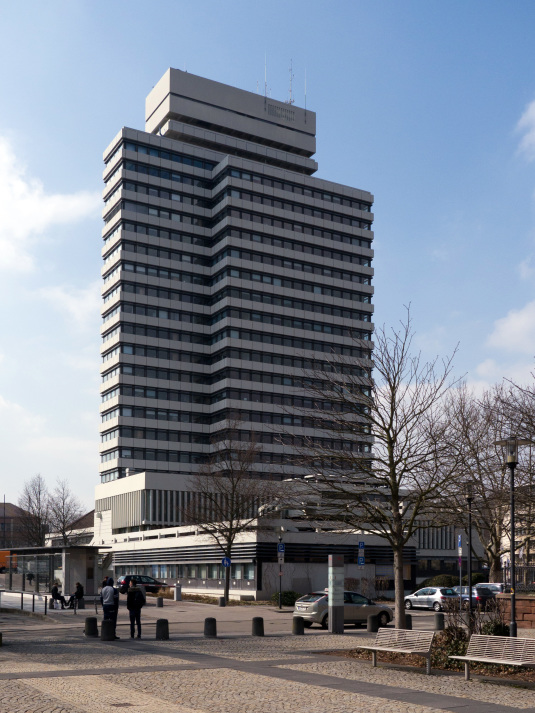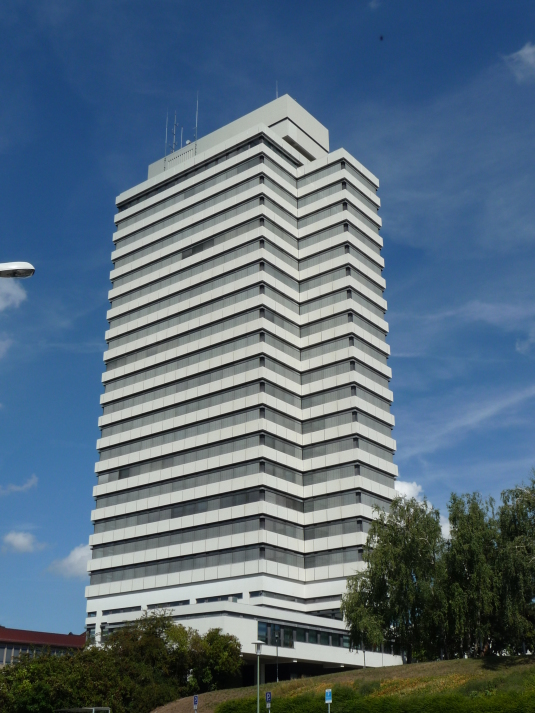Roland Ostertag: City Hall, 1964C–1968
- Kaiserslautern, Germany, Show on map
- #GOV #Western Europe
-
Roland OstertagŌĆÖs 84-metre-high city hall has been a prominent feature of KaiserslauternŌĆÖs cityscape since its completion in 1968. The design was originally planned for a new town hall in Mannheim, but due to several circumstances it was finally realized with a few adjustments in Kaiserslautern on the Schlossh├╝gel.┬Ā
The overall structure is built as a reinforced concrete skeleton construction and consists of a high-rise building, adjoining low-rise buildings, and an associated square in front. The various parts of the building are characterized by their rectangular floor plans, which are arranged at right angles to each other, but still in a playful manner. The construction of the complex shows a strong readability of the functional arrangement of the room groups: In the two- to four-storey, flat part, the city hall can be accessed from several sides. This is where the public areas are located. The administration is hierarchically distributed vertically over twenty floors in the high-rise building. The different departments are organized in individual offices around a load-bearing access core made of in-situ concrete. The separation of the public and administrative sectors can be seen on the fa├¦ade at the level of the third floor, where a strictly gridded fa├¦ade in the lower area visually separates itself from the floors above with continuous bands of windows and concrete. The three smaller, largely windowless top floors are used for storage purposes and operating technology. After the administrative departments in Kaiserslautern had previously been spread across 19 locations, OstertagŌĆÖs building functions practically and symbolically as the center of a modern city, visible from afar.
The cubic character also runs through the architectŌĆÖs later city hall buildings (for example in Bad Friedrichshall or Sch├Čnaich), but the one in Kaiserslautern is considered to be the his main work, which is not surprising given its dimensions as a dominant feature of urban planning: At the time of construction, it was the tallest city hall in whole Europe.
-
The building has been a listed as heritage protected since September 26, 2019 (last updated on January 3, 2024).



